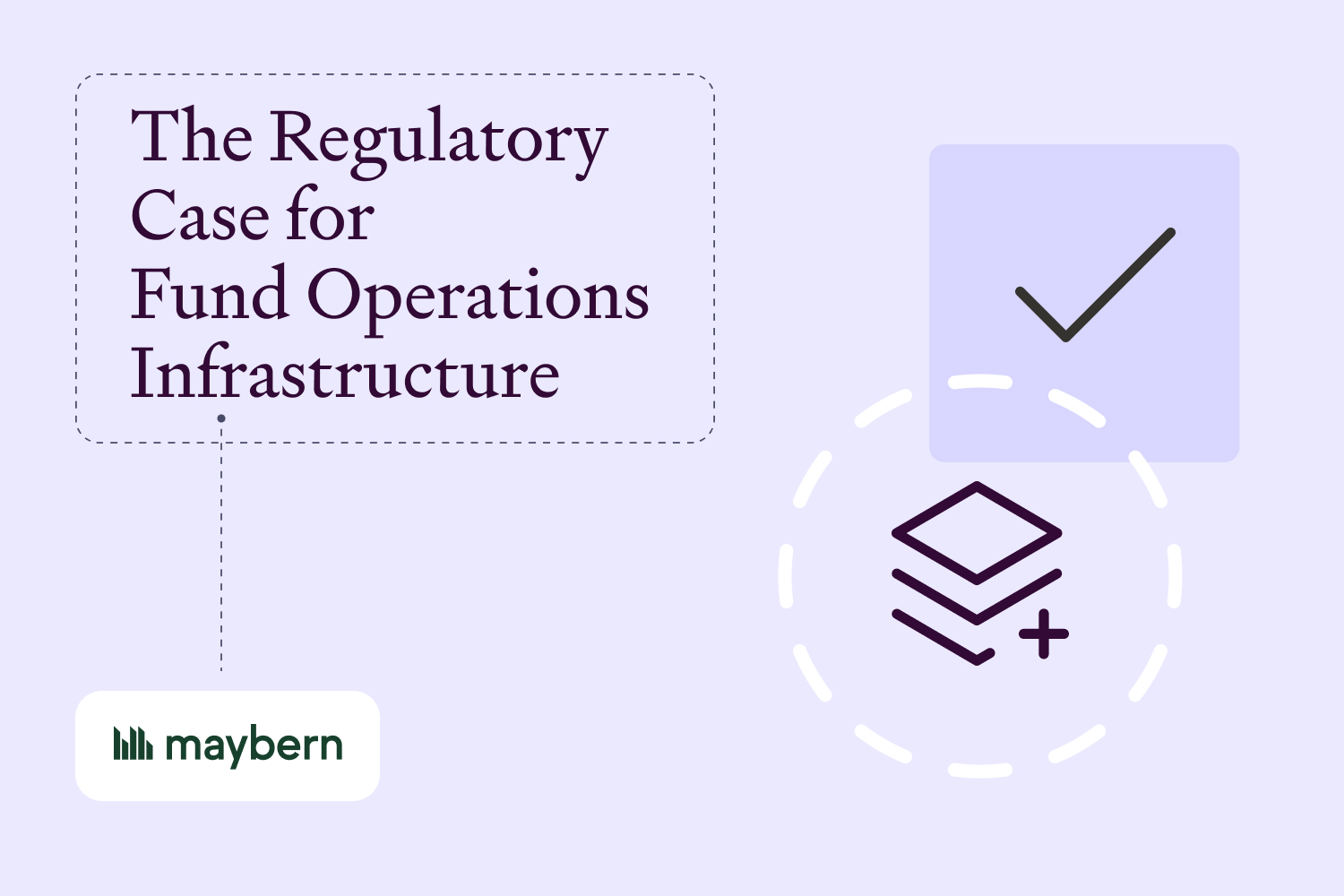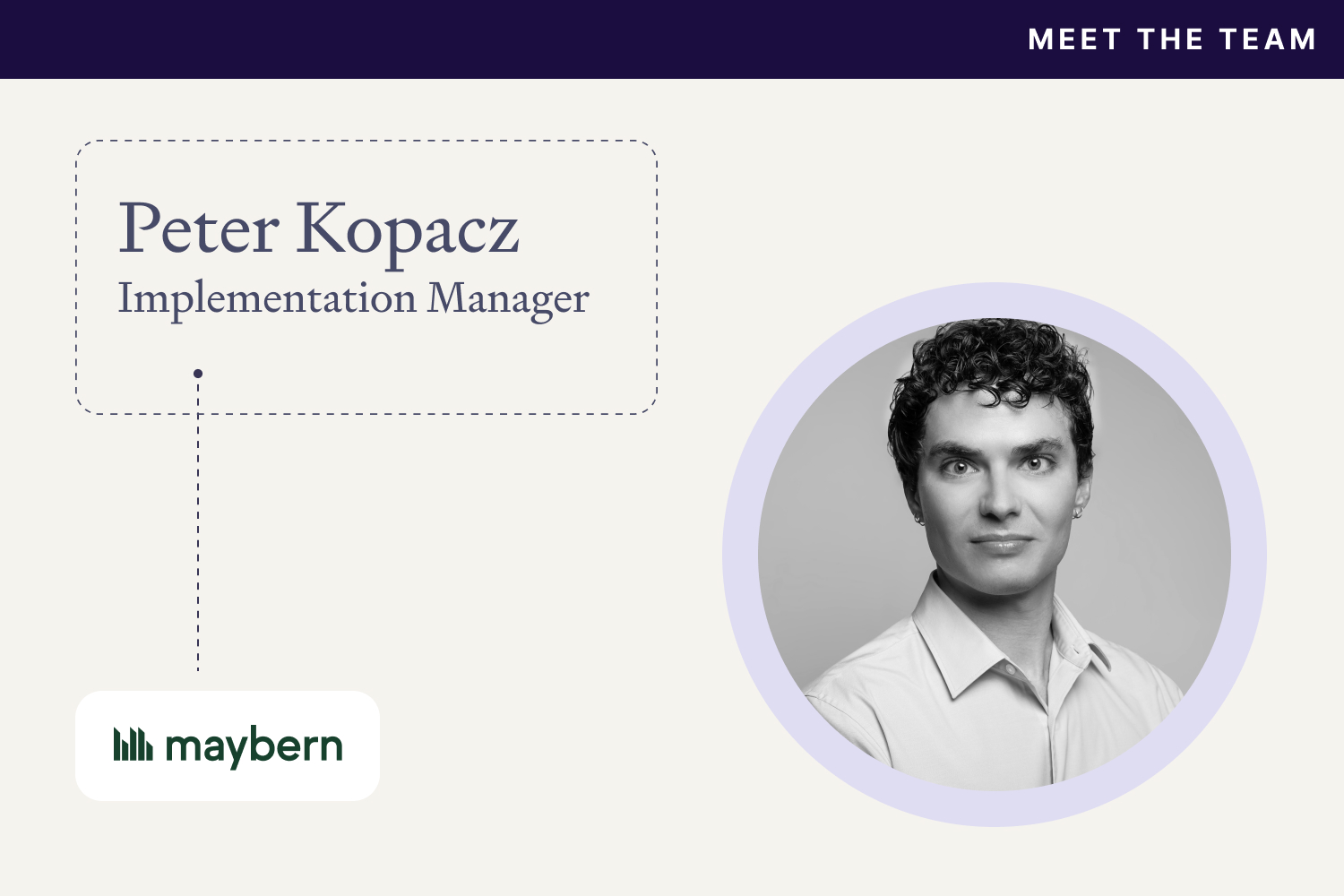
The Regulatory Case for Modern Fund Operations Infrastructure
David Aizenberg, CPA (Director, Solutions Architecture at Maybern) has over 20 years of experience investment reporting, accounting, and process automation. Previously, he spent 6 years at Kaliber & Co. where he was responsible for building reporting, reconciliation workflows, delivering innovative solutions, system migrations, and custom analytics for clients and complex portfolios.
On September 19, 2025, in a speech to the Better Markets Academic Advisory Board, SEC Commissioner Caroline Crenshaw outlined the regulatory pressures reshaping private markets, and inadvertently made a compelling case for why modern fund operations technology is no longer optional.
Key Takeaways for Fund Operators
The regulatory environment is shifting fast. Private fund AUM has tripled since 2013, transparency requirements are intensifying, and enhanced data reporting is inevitable despite delays. Commissioner Crenshaw's message is clear: operational sophistication isn't a competitive advantage anymore, it's table stakes. What this means for you: Commitment-level tracking, real-time processing, and regulation-ready infrastructure need to be in place now, not when the next Form PF amendment finally takes effect. The funds that will navigate increased scrutiny smoothly are those with the operational foundation already built. Here's what Crenshaw's speech tells us about where private markets operations are headed:
The Scale of the Challenge
The numbers are staggering. Private fund AUM has grown from $8 trillion in Q1 2013 to $24.3 trillion in Q3 2024. Regulation D private placements have jumped from $588 billion in 2009 to $2.15 trillion in 2024. This explosive growth hasn't just created more work: it's created fundamentally different operational complexity. For fund CFOs, this means managing thousands of commitment-level transactions, processing capital calls and distributions in real-time, and maintaining the granular data trail that modern oversight requires. The spreadsheet era is over.
Transparency Isn't Negotiable Anymore
Commissioner Crenshaw's core message is clear: the regulatory tolerance for opacity in private markets is ending. She emphasizes that "we must take the time to seriously consider additional measures to tackle notorious valuation issues, require important disclosure to investors, and manage rampant conflicts of interest." The question isn't whether transparency requirements are coming, it's whether your operations can deliver when they arrive. Commitment-level tracking and real-time transaction processing aren't nice-to-have features; they're the data foundation that proper disclosure requires. When regulators ask for detailed reporting on exposure, concentration, or performance attribution, you need systems that can answer without heroic manual effort.
Liquidity Risk Gets Real
The speech highlights liquidity mismatches as a critical vulnerability. Managing liquidity in private markets requires understanding your true redemption capacity at a granular level. This means knowing exactly what capital is called, what's callable, what's distributed, and what's committed across every investment and every LP at a point in time. Real-time processing gives CFOs the visibility to make informed decisions about capital calls and distributions.
Enhanced Data Requirements Are Inevitable
Despite repeated delays to Form PF amendments designed to "enhance the quality of the data filed," the trajectory is clear: better data reporting is coming. Funds need regulation-ready infrastructure now, not retrofit solutions when deadlines hit. The firms that will navigate increased reporting requirements smoothly are those with detailed, accurate data already flowing through their systems. When enhanced Form PF finally takes effect, you want to be the CFO who can pull reports with confidence, not the one explaining to the SEC why your data doesn't reconcile.
The Retail Access Wild Card
Perhaps the most operationally significant trend Crenshaw addresses is the push to allow retail investors access to private markets through 401(k)s and closed-end funds, a shift that would "fundamentally change how those markets function." If private funds begin accepting retail capital, operational complexity explodes. You're suddenly tracking smaller commitments, more frequent transactions, potentially more redemption requests, and providing more detailed reporting to a broader investor base. This scenario demands infrastructure built for granular, high-volume processing from day one.
Performance Under the Microscope
The speech notes that private markets have underperformed large-cap U.S. stocks on one-, three-, and five-year bases, while "retail funds with exposure to private investments come with higher fees and expenses that eat into any potential returns." As performance faces greater scrutiny, finance teams need accurate, real-time waterfall calculations to understand and communicate true net returns. When LPs start asking harder questions about fees, expenses, and net performance, your operations need to provide answers backed by precise calculations, not estimates from quarterly snapshots.
Technology as Guardrails
Commissioner Crenshaw criticizes those who call for "guardrails" while opposing concrete regulatory measures: "We cannot just give lip service to the importance of these protections. And we cannot use the promise of some hypothetical future protections as an excuse to let retail investors ride into 100 mile per hour traffic today."Here's the reality: operational infrastructure is part of the guardrails. Technology that provides transparency, accuracy, and detailed tracking enables the oversight that proper market function requires. It's about having the operational controls that make disclosure and accountability possible.
The Bottom Line
Commissioner Crenshaw's speech validates what many fund CFOs already know: operational sophistication, transparency, and detailed tracking are no longer competitive advantages. They're table stakes in a market under regulatory scrutiny.
The private markets are evolving toward greater transparency, more diverse investor bases, and enhanced reporting requirements. The question for fund operators is simple: will your infrastructure be ready, or will you be retrofitting systems under deadline pressure? The firms that thrive in this environment won't be those with the most regulatory lawyers. They'll be those with the operational foundation to deliver what regulators, investors, and the market demand: accurate data, transparent reporting, and sophisticated liquidity management. That foundation is technology, and it needs to be in place before the next wave of requirements hits.
Recommended Content

How Maybern Empowers Fund CFOs to Meet ILPA Principles

Meeting the Growing Demands of In-Flight LP Information Requests: Why Traditional Approaches No Longer Work

